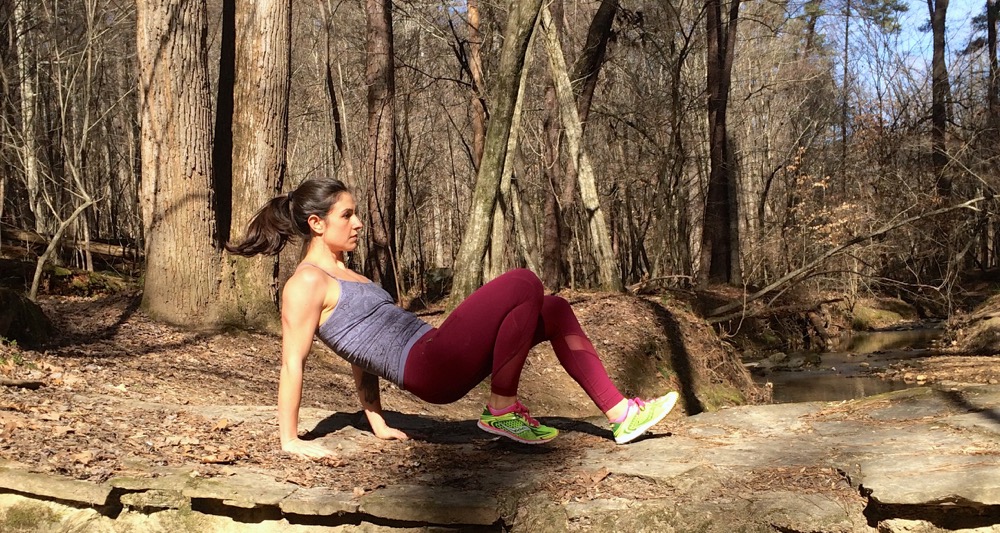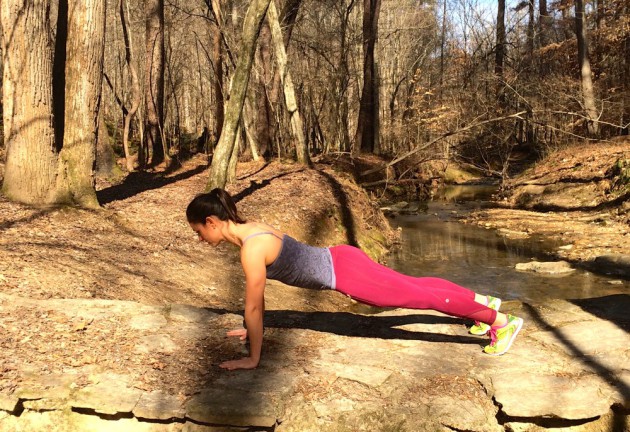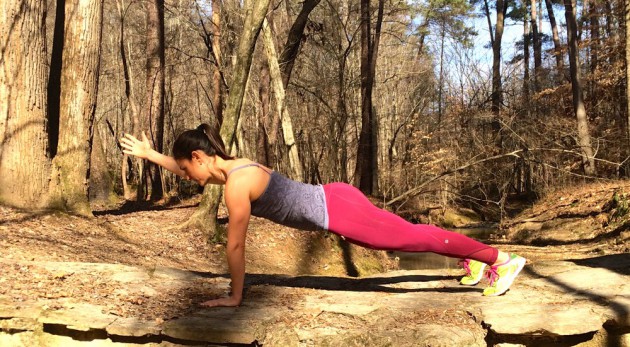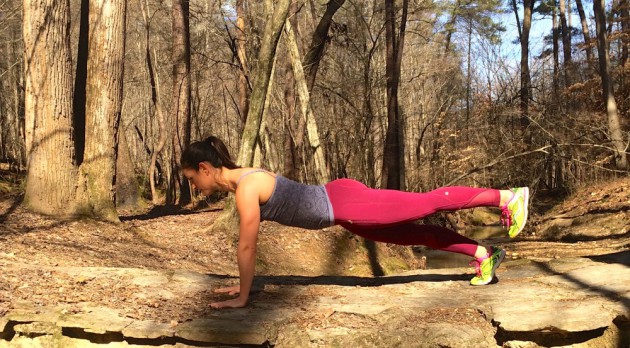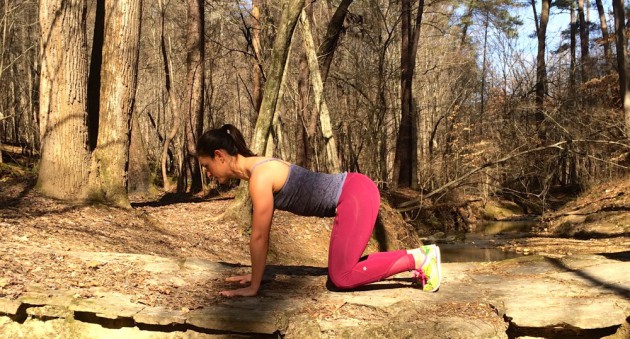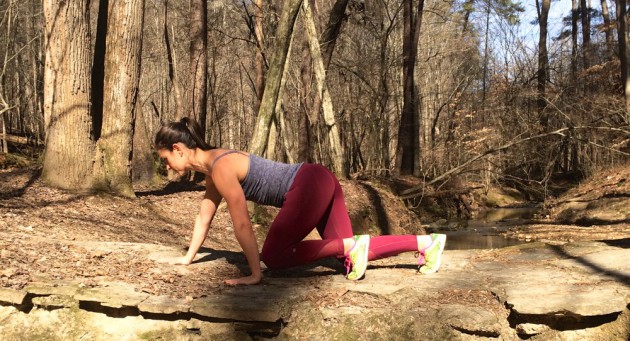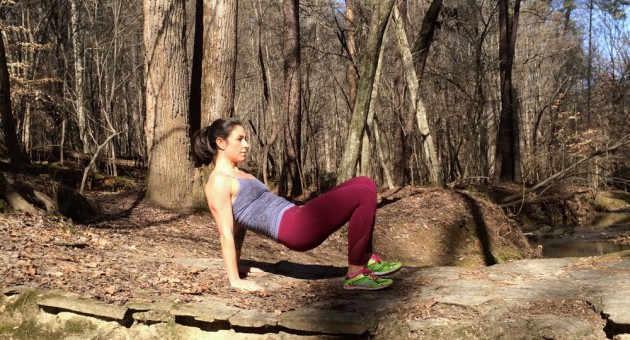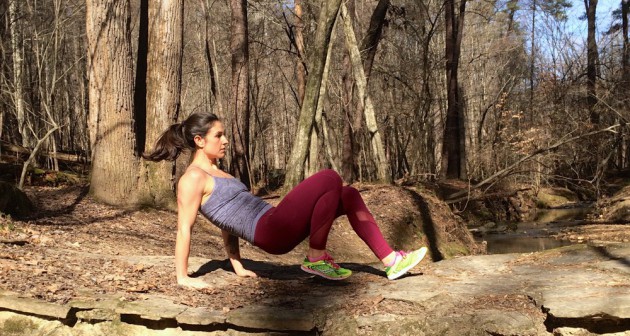By Carolina Camaro
There’s no question that being a female runner brings a very unique set of challenges to the table. There are notable differences in anatomical structure, biomechanics, strength and flexibility that place women at greater risk for injury. In general, women have a wider pelvis, more adducted hip position (thigh collapsed inwards), greater hip internal rotation and a more knock-kneed alignment. (Horton & Hall, 1989; Simoneau et al, 1998).
These structural differences can, over time, lead to repetitive stress and eventually injury. One of the most common issues that arise from these structural differences is IT band friction or ITS, IT Band Syndrome. The iliotibial band, or IT Band for short, is a thick band of tissue that extends from the lateral thigh down over the knee. It functions to control the amount of hip adduction (internal rotation) and minimize the rotational forces at the hip and knee. (Ferber et al., 2003). IT band friction typically presents as pain on the outside of the knee.
The Q-angle, or quadriceps angle, is another structural difference in women that can lead to knee related aches and pains. The Q-angle refers to the angle of pull the quadriceps (thigh) muscles have on the patella (knee cap). A greater Q-angle places greater pull on the patella to the outside of the knee eventually leading to patellofemoral pain syndrome, or pain in front of the knee.
While these structural disadvantages may be present in female runners, there are simple exercises that can be used to strengthen the body and prevent against some of these issues.
Core training is one of the most important things any runner can do to prevent injury and improve running mechanics. The primary function of the core is to maintain trunk stabilization by resisting rotational forces. While sit-ups and crunches may help develop the rectus abdominis (six pack muscle), they won’t address the core’s primary function, stabilization.
The core is comprised of more than just the abdominal muscles. It includes muscles in the hips, legs, and even feet. Any muscles you are using to prevent your body from rotating should be considered core muscles. Furthermore, core strength is not the only aspect of core training that should be trained. Core coordination, or neuromuscular coordination – knowing how to facilitate movement using the correct muscles in an appropriate sequence, is integral to improving movement patterns and reducing risk of injury.
Now that we have a good understanding of what the core is and what is does, it’s time to look at more effective core training. I will highlight 4 exercises that can be used as a progressive sequence in core stabilization and coordination training: plank, plank with progressions, leopard crawl and crab walk.
The plank is a good place to start. This movement trains core stabilization and forces the athlete to resist rotational forces. Once you have progressed past a standard plank, meaning you can hold it for more than 90 seconds, add raised arm and leg progressions. Work on these until you can hold each progression for at least 90 seconds.
The leopard crawl is one of my absolute favorite core. In this crawl-based movement, you are incorporating core stabilization and coordination. The leopard crawl helps athletes develop the X pattern of movement coordination. Think about your arms and legs when you are running; as your right arm swings forward, your right leg swings backward creating an X pattern from flexion to extension. This happens due to the cross-body sling system that facilitates forward movement.
Drills such as the leopard crawl help develop the core in a functional way, mimicking the X-pattern across different movement planes and loading the core. Leopard crawls should be performed in sets. Start out crawling for 25m, or as far as you can go without having to drop down to your knees, building up to 50m or 100m per set. Perform 3-5 sets with rest periods in between.
The crab walk is another crawling drill that develops the X pattern. The crab walk is performed in the supine position, requiring the athlete to crawl face up, hips up, on hands and feet. This loads the core from the back adding in posterior chain muscles. Crab walks can be performed in sets similar to the leopard crawl. Start with about 25m, or as far as you can go without having to stop, building up to 50m or 100m at a time. Perform 3-5 sets with rest periods in between.
These 4 exercises develop the core in a functional capacity. They can be performed before or after a run and are designed to prepare your body for running, improving mechanics and technique while strengthening the entire core. They can be added to any training program at any time.
Founder and Head trainer, Carolina Camaro, is a mom, entrepreneur and athlete who knows a thing or two about living a healthy lifestyle. A seasoned fitness pro with over 10 years of experience personal training, coaching and meal planning, Carolina holds a Masters in Exercise Science and Nutrition from the George Washington University. Inspire Fitness was inspired by Carolina’s need for a different approach to fitness & nutrition. After having her sweet little boy, Avi, she found a deep desire to give people more than just another fitness routine, but rather something to inspire their soul. She took her workouts outside and that changed everything. Carolina’s Inspire Lifestyle is a 360 degree approach to fitness. It addresses fitness, nutrition & mental wellbeing through outdoor fitness and sensible nutrition. Check out her website for more information www.inspirefitnessbycarolinacamaro.com


